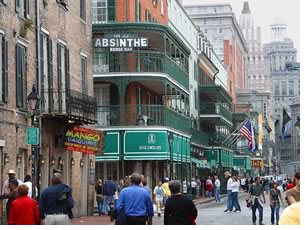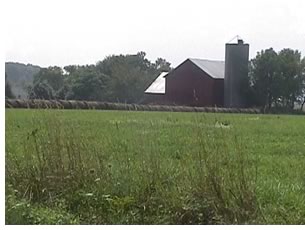

08/2005
New Orleans and Alexandria Township, N.J., to participate in new community assistance program
The AIA Center for Communities by Design has selected New Orleans and Alexandria Township, N.J., as the newest members of the 2005 Sustainable Design Assessment Team (SDAT) community assistance program, which was launched with five initial communities in April. The collaborative SDAT brings together design and planning professionals from across the country to provide a roadmap for communities seeking to improve their sustainability, defined as “a community’s ability to meet the environmental, economic, and social equity needs of today without reducing the ability of future generations to meet their needs.”
 “Metropolitan New Orleans has experienced sprawl-type development
patterns, resulting in a decrease in the availability of green and open
space,” said Caitlin Cain, economic development program manager,
New Orleans Regional Planning Commission. “This program represents
the ideal opportunity to promote a healthier lifestyle and apply smart-growth
principles. We are excited to work directly with the AIA Sustainable
Design Assessment Team and local citizens to develop sustainable criteria
to address social, economic, physical, and environmental issues currently
affecting the region.”
“Metropolitan New Orleans has experienced sprawl-type development
patterns, resulting in a decrease in the availability of green and open
space,” said Caitlin Cain, economic development program manager,
New Orleans Regional Planning Commission. “This program represents
the ideal opportunity to promote a healthier lifestyle and apply smart-growth
principles. We are excited to work directly with the AIA Sustainable
Design Assessment Team and local citizens to develop sustainable criteria
to address social, economic, physical, and environmental issues currently
affecting the region.”
A team of professionals—such as architects, planners, hydrologists, and economic development specialists—will be selected based on their credentials and the specific needs of each community. The SDAT will work in conjunction with local stakeholders to help shape the community’s strategy to increase sustainability. To provide the most objective assessment, team members are selected from areas outside the communities under scrutiny.
 “Alexandria Township is a rural community under tremendous growth
pressure, which could be further exacerbated by the growth limitations
imposed on a large portion of the region,” says Carol Hoffmann,
deputy mayor of Alexandria Township. “To steer growth to a more
sustainable model, we welcome the consultation of the AIA Sustainable
Design Assessment Team as we collaborate to determine the best course
of action in addressing the transportation, infrastructure, environmental
degradation, and water supply issues facing our community.”
“Alexandria Township is a rural community under tremendous growth
pressure, which could be further exacerbated by the growth limitations
imposed on a large portion of the region,” says Carol Hoffmann,
deputy mayor of Alexandria Township. “To steer growth to a more
sustainable model, we welcome the consultation of the AIA Sustainable
Design Assessment Team as we collaborate to determine the best course
of action in addressing the transportation, infrastructure, environmental
degradation, and water supply issues facing our community.”
The communities were selected after submitting an application outlining the economic, environmental, and social-equity challenges facing their region to the 2005 SDAT review panel.
Six-prong program
The SDAT community assistance program provides the selected communities
with six components:
- Preliminary/scoping visit
- Three-day visit from a multidisciplinary team
- A report highlighting the strengths and weaknesses of the community with regards to sustainability, along with the opportunities and obstacles to change
- Consultations (typically by phone or e-mail) after the three-day visit
- A conference call six months after delivery of the assessment report to review progress
- One-day follow-up evaluation visit a year after the SDAT report is delivered.
“The purpose of the SDAT program is to review the barriers to sustainability in each community and provide a broad overview to help formulate future policies and design solutions so that the regions can map a path towards a healthy future,” said David T. Downey, Assoc. AIA, managing director of the AIA Center for Communities by Design. “The feedback from politicians, academics, and local citizens in other SDAT markets has been tremendous so far, and we feel that the SDAT program can serve as a model for communities all over the country that are facing similar issues.”
The SDAT community assistance program will be made available to other communities across the country, and a request-for-proposals will be issued in the late fall for applications. To learn more about this program, send an e-mail to sdat@aia.org.
Copyright 2005 The American Institute of Architects.
All rights reserved. Home Page ![]()
![]()
 |
||
|
||